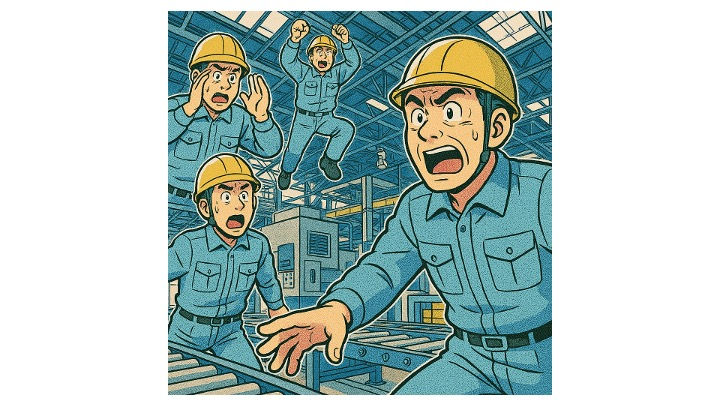Stages of a word
- hidet77
- Jan 17, 2023
- 4 min read

Many words have multiple meanings.
When we work, we use words. But we need to be careful since many words have multiple meanings.
As I learned about TPS/Lean, I learned many words.
At the first level, there are ways we typically use those words. Simply translating is misleading. There are always nuances and history behind a word.
Then on top of that, there are additional meanings that the game changer has added and are explicit.
Yet, there is a third level—a tacit level that is hard to understand.
Many words have such meanings.
It’s essential to think about the context of the original use. Then what did the changer change? What are the hidden messages behind the change?
And the only way to confirm if you have the same understanding of a word is to go to reality and compare it at the physical space.
I wrote about the word “Seiri” in the past.
The meaning of “Seiri” in the traditional way is;
Organize based on logic/science
Organize the logic/science
Such usage of the word “Seiri” is the general usage of the word. My wife asked my kids to “Seiri” the toys. She means putting the toys back where they should be at the end of the day, not throwing them away. That’s how we use the word in daily life. “Seri-Seiton” is a daily proverb.
Then the pioneers of TPS focused on “Throwing away unnecessary things.” Such use of “Seiri” is used as ”Staff reduction” or ‘Business liquidation.” So, it is not wrong. And I understand that they focused on such aspects of the word because if we don’t throw away the unnecessary things, there is no meaning. By throwing away, we usually create space. The opened space creates new opportunities to improve. Reduced use of space also means reduced motion and searching. The benefits will be created by throwing unnecessary things away.
But the tacit meaning of “Seiri” is that this is not additional cleaning activity. If the logic/science of work is correct, there should be no need to throw away anything. The true goal of “Seiri” is not continuously throw away things by adding events or personals, but by everybody following the standardized work, there is no need to throw away. TPS intentionally makes things painful, so the managers investigate if the standardized works are logical or followed. Throwing away is costly, but TPS does that as a lesson to the managers. Yet, Ohno & Toyota used this word since the Japanese are very familiar with this word.
There are many perceptions of this “Seiri” without understanding the context.
A similar story exists for the word “Kaizen.”
There is a word called “Kairyou,” which represents “Continuous improvement,” and historically, this was the word used.
Typically, Kairyou means improving tangible things like products and equipment. Ohno started the word “Kaizen” to differentiate in terms of;
Frequency
Executor
Location
Budget
And there are more tacit knowhows behind the word.
In terms of frequency, “Every day” is crucial. Yet, that is for normal operating conditions and typical personnel. When it is a workshop, this frequency goes much higher.
In terms of executor, ideally, everyone. Here, the original meaning of Kaizen did not touch tangible things. But such a rule is destroyed in TPS. How quickly everyone can make tangible changes are the key. Even in cases of equipment, if it is simple things, they want the front-line managers to have such capability to improve. Improving the Kaizen capability towards the traditional Kairyou area is challenged.
The location is on the shop floor and everywhere. Kaizen needs to be implemented on the shop floor. But today, there are many implementations of Kaizen inside the office or non-manufacturing environment. How to deploy is always in the mind of a leader.
Kaizen is not about buying new tools and equipment from outside. It is about using internal capabilities. Of course, such improvement can’t be made without any money. But it should be done within acceptable budgets.
Although these might be the original tacit messages behind “Kaizen,” there are many perceptions of the same word in the entirely opposite direction. Once, I heard that they are doing “continuous improvement,” which meant that an engineer buys a new machine once in a while. It is actually a tragedy how twisted some of the interpretations are.
Such stages of a word exist not only in Japanese but also in any language.
For example, “innovation.”
The early use of “innovation” had negative nuances. From ancient Greek to the early 20th century, the word was political. Joseph Schumpeter changed the word toward technological and economic positive changes. And today, when we google “innovation,” the definition will overflow. And a tacit level, some use it as fake marketing or flattery. The word has so many meanings that it is out of control.
These wide ranges of the meaning of a word suggest to us the difficulty of communication. Can we gain complete understanding by only using words? Verbalizing is necessary, and we must continue to document. Yet, relying entire communication on words has a limitation of comprehension. This suggests the need to visit the shop floor and communicate using physical conditions.



Comments